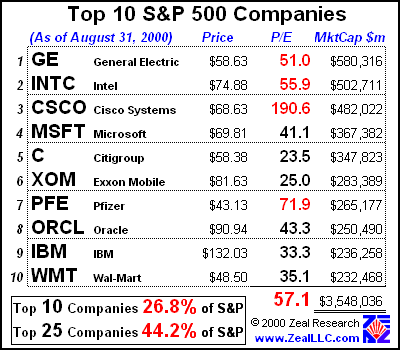2013년 기사인데 상당히 재밌는 그림이 있다. 닷컴 버블때와는 다르다는 주장인데 2015년에 보니 맞는 이야기가 됐네.
------------------

The Nasdaq has climbed more than 30% this year, topping 4,000 for the first time since the tech bubble era. But this time around, the index and its rally look and feel a whole lot different.
It's been a banner year for stocks. The Dow and S&P 500 have been in record territory since March, while the Nasdaq has been trading at its highest levels since 2000.
Though the robust gains have ignited some worries that stocks may be overvalued, most experts believe that a dose of skepticism is actually healthy and predict that stocks will continue to rise next year, albeit at a more modest pace.
Still, the fact that the Nasdaq is back at a level it last traded at during the tech bubble worries some investors. But experts say the Nasdaq is a completely different animal than it was at the start of the millennium.
"The Nasdaq has really grown up over the last decade. It's a lot more mature now," said Kim Forrest, senior equity analyst at Fort Pitt Capital.
For one, the Nasdaq is no longer as tech-heavy as it used to be.
Tech stocks still make up about 42% of the Nasdaq composite, but it was nearly 60% at the height of the tech bubble, according to the Nasdaq OMX (NDAQ). And the exchange has welcomed more companies from the retail sector, health care, and financials. Energy, materials and utility companies, which virtually had no presence on the Nasdaq a decade ago, are also now a small part of the exchange.

"The Nasdaq is definitely not nearly as lopsided as it used to be," said Ryan Detrick, senior technical analyst Schaeffer's Investment Research. "Having more diversification gives the index a whole different feel, and helps its safety factor."
Even the top 100 companies in the Nasdaq are a lot more diverse, said Detrick. He pointed out that one of the companies that is slated to join the Nasdaq-100 (which is the largest non-financial firms trading on the Nasdaq) this week is Tractor Supply Company (TSCO), the country's largest farm and ranch supplies chain.
Related: No tech bubble here
Overall, the most heavily-weighted companies in the Nasdaq have changed pretty significantly. Apple (AAPL) now makes up nearly 13% of the Nasdaq-100, compared to just 1% at the height of the tech bubble.
Amazon (AMZN), which was publicly traded in 2000, and Google (GOOG), which was around but still private, have become more dominant. Older tech titans like Cisco (CSCO) and Intel (INTC) no longer have as much influence over the index.
Biotechnology companies Gilead Sciences (GILD), Celgene (CELG) and Amgen (AMGN) have also grown more prominent in the Nasdaq as the industry has matured. The biggest biotechs are all profitable companies that now rival Big Pharma firms.
"Biotech companies are now making money, which wasn't so much the case a decade ago," said Detrick. "And with the way the demographics are changing -- aging baby boomers -- biotech will continue to be one of the strongest sectors."
And of course social media companies like Facebook (FB) have added a whole new dynamic to the tech sector in recent years.

Not only have the companies at the top changed, but they're trading at much more reasonable valuations.
Back in early 2000, Cisco traded at levels that were more than 100 times earnings estimates for the coming year. Today, Apple trades at less than 15 times earnings expectations for 2014.
Related: 8 things to know about the 2013 bull market
While most experts agree that the Nasdaq overall is not in bubble territory, they warn that some particular sectors may be over-hyped.
"It's pretty clear to me that 3-D printing companies are overvalued," said Forrest.
Shares of 3D Systems (DDD) have jumped nearly 150% this year, while voxeljet (VJET) is up 180% and ExOne (XONE) is up more than 200%.
Forrest said that while people are in love with the idea of being able to design something and print it out, 3-D printers will only really be useful to organizations that design products just before the prototype phase.
"The reality of what these products can do, should do and will do are way different than what people think," said Forrest. "Will we have 3-D printers? Yes. Will they be in everyone's homes? No."
Posted in: amazon, Apple, biotech, bubble, Cisco, FaceBook, Google, Intel, Microsoft, Nasdaq, social media, stocks,tech stocks, technology, Twitter
http://buzz.money.cnn.com/2013/12/22/nasdaq-tech-bubble/













